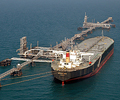search the site
Asia seen as oil’s bright spot in 2024; India to edge past China’s growth
in Freight News 18/12/2023

Asia is expected to account for the bulk of global oil demand growth in 2024, with strong economic growth helping South Asian demand edge past China, where economic headwinds will likely keep a lid on appetite for the fossil fuel, analysts and trade sources told S&P Global Commodity Insights.
With Asia’s voracious appetite for jet fuel leading the way, demand for refined products such as gasoline, is also expected to remain buoyant. The region could witness its refinery runs in first-quarter 2024 rise to a level not seen before.
Also in the spotlight will be Asia’s unwavering appetite for Russian crude which catered to refiners in India and China in a big way since the start of the Russia-Ukraine war. In addition, the market will be watching Venezuelan crude flows to both Asian buyers following the lifting of sanctions.

“Asia will continue to dominate global oil demand growth in 2024. South Asian demand will likely increase by 3.2% in 2024, exceeding mainland China’s 2.9%,” said Zhuwei Wang, Asian oil analytics manager at S&P Global.
But not only for the short term as analysts held similar views for long-term demand growth trend in Asia.
“China has been by far the most important driver of global oil demand growth over the past few decades, accounting for 40% of the incremental demand and more than 50% so far this decade,” Bernstein Research said in a note. “India has been less important, but, going forward, India is expected to be the most important single region driving demand growth over the next 20 years, making it a key country to watch for future demand.”
Jet fuel to fly high
Looking at the prevailing demand trend, the Asian oil market has started to draw conclusions that jet fuel will again provide ample growth opportunities in 2024.
On an annual basis, S&P Global expects global kerosene and jet demand to grow 1.02 million b/d in 2023 to 7.13 million b/d, driven by China’s reopening after the pandemic. But global demand growth would slow to 420,000 b/d in 2024.

“Asia has contributed 60% of global kerosene and jet demand growth in 2023 and will continue to lead by contributing 64% in 2024,” Zhuwei said.
As demand rises, Asian refiners are rushing to finalize their plans for early 2024. Refinery throughput is expected to climb to a record high 31.4 million b/d in Q1 2024, up 466,000 b/d year on year, according to S&P Global.
But not all might be smooth sailing on the demand side. While global oil demand has rebounded, a recession remains a key downside risk. The OPEC+ meeting on Nov. 30 to extend cuts to Q1 2024 remain supportive for prices but weak macroeconomic outlook is weighing on sentiment.
OPEC+ has long maintained a firm stance to limit production, but traders said that competition for spot and term Middle Eastern barrels were far from fierce as India was taking a lot of its crude requirements from Russia.

“For East Asian refiners, I believe India is the ‘superhero’ because big buyers like IOC and Reliance are willing to take Russian barrels, leaving plentiful Middle Eastern sour crude supplies for Japan, Taiwan, South Korea, Thailand and even China to take,” a feedstock manager at ENEOS said.
According to data from S&P Global Commodities at Sea, Russia remains India’s primary crude oil supplier, accounting for about 33% of total crude imports, or 1.51 million b/d, in October, and 35% of total crude imports, or about 1.55 million b/d, in November.
“We wish India continues to take the practical path by taking cheap Russian barrels that many East Asian refiners were afraid to take,” a feedstock manager at a Taiwanese refiner said.
Limited impact from OPEC+ cuts
Middle Eastern suppliers have been raising monthly official selling prices in recent quarters on the back of OPEC+ production cuts, and many Asian refiners still find the OSPs rather high. However, the broad Dubai crude market structure has eased significantly from 2022 levels as India’s s appetite for Russian crude left a big demand gap in the Persian Gulf crude complex.
The spread between front month Platts cash Dubai and same-month Dubai swap, often used as an indicator for the strength of the Middle East sour crude market, averaged $1.69/b to date, sharply lower than the 2022 average of $5.07/b, S&P Global data showed. The spread, which is widely known as the Dubai market structure, was last assessed at minus 35 cents/b Dec. 13.
Traders and analysts added that major Middle Eastern producers are expected to continue respecting East Asian customers’ demand and requirements.
Japan imported 2.42 million b/d of crude from Middle Eastern suppliers over January-October, making up 95.6% of the country’s total crude imports of 2.53 million b/d, latest Ministry of Economy, Trade and Industry data showed.

A logistics manager at a South Korean refiner said Middle Eastern suppliers like Saudi Arabia were keen to provide more than what Northeast Asian refiners have nominated for, thanks to India’s strong preference for Russian crude.
In the first nine months of this year, South Korea imported 543.62 million barrels of crude from the Middle East, up from 524.95 million barrels received during the same period a year earlier, data from Korea National Oil Corp. showed.
Meanwhile, China imported 5.31 million b/d of crude from Middle Eastern producers in the January-October period, a shade higher than the 5.3 million b/d purchased from the Persian Gulf region a year earlier, data from the General Administration of Customs showed.
China’s higher Persian Gulf crude intake in the first 10 months of 2023 is a strong indication that Asia’s biggest oil consumer has not seen any serious disruption in its sour crude procurement despite prolonged OPEC+ cuts, traders and refinery sources said.
Source: Platts


















